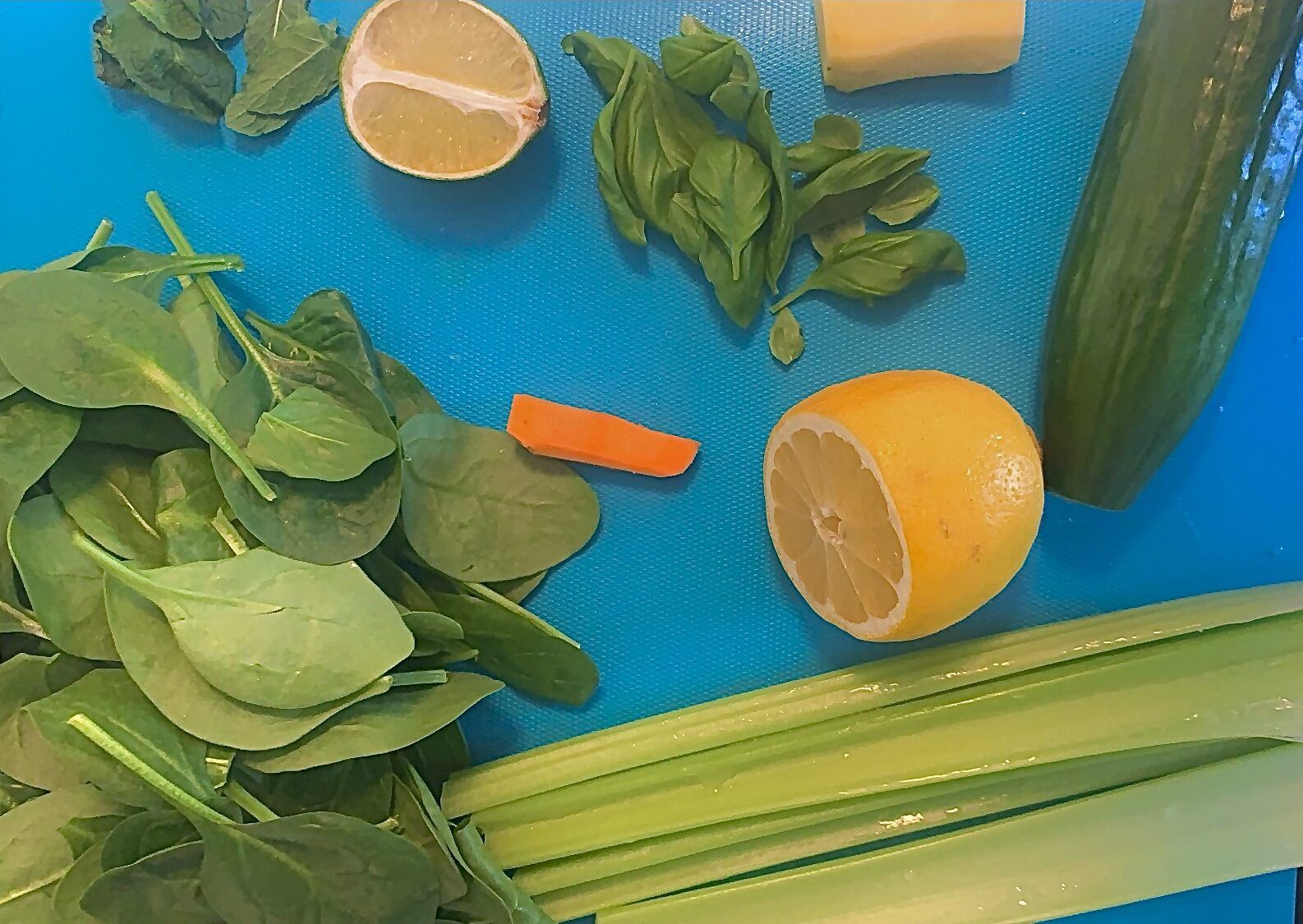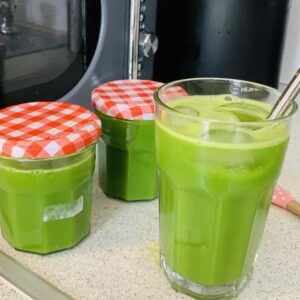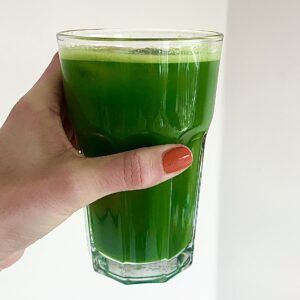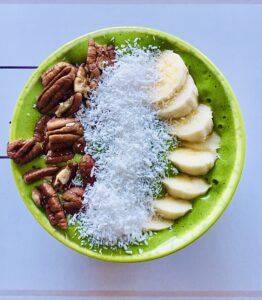
Green juice and the BEST juicer
Green juice is one of my favourite things ever, and I get asked for recipes all the time. It can actually be very easy to make a nice tasting green juice. You do want to make sure it’s not simply a sugar rush you’re making yourself though. Here are some of my go to recipes that are easy to make, and taste pretty good (IMO anyway!).
Which juicer is best?
I invested in a slow juicer during lockdown number 2, and it was one of the best purchases I ever made. I have been juicing for years. When my old juicer bit the dust, I think it took all of a week to buy a new one. I spent quite a bit on mine, because I knew I would use it. If you are new to juicing, that might be a ridiculous amount to spend on a juicer. But if you are a long term juicer, I would highly recommend the Hurom H200 Self-feeding Juicer.
The Hurom is a slow juicer, so the enzymes in your juice aren’t destroyed during the juicing process, which is quite important if you want all the goodness from your veg. It’s a vertical juicer, so it fits on my counter – which means I leave it out and therefore use it all the time (and my kitchen is tiny).
The real selling point was that the Hurom is a self-feeding juicer. This means I no longer have to spend ages chopping up all the fruit and veg into really small chunks to juice – this massively reduces the time it takes to juice. It’s also pretty quick and easy to clean with most parts being dishwasher safe, so I can whip up a juice in about 15-20minutes, including cleaning up after. Upgrading my juicer has transformed juicing for me – I now juice 3-4 times a week at least, because it’s so not a big deal anymore.

What if I never juiced before?
There are lots of juicers on the market and a variety of price points to suit just about every budget. Just make sure you consider how you are going to store it, how long it might take you to make a juice and if the parts are dishwasher safe. A cheap juicer can be a great starting point, because any juicer ends up relatively expensive if it sits in your cupboard gathering dust. My old one was cheap and cheerful and eventually wore out, but the fact that I used it frequently helped me justify the more expensive one. Slow juicers can be more expensive, but it is the number one feature to go for.
How to make a juice that is actually healthy
Juicing is a fantastic way to get more green veggies into your diet. However, you do have to be careful about making a juice that is primarily fruit – as this is essentially mainly sugar. A glass of freshly squeezed orange juice is the same as a glass of Coca-Cola as far as your teeth are concerned, and your blood sugar probably agrees. Because juicing takes out all the fibre, juicing fruit means you get a large hit of sugar, which pretty much negates the benefits of juicing in the first place. So, how do we make a healthy juice that is not going to cause a blood sugar spike? Well, we have a few options.

Use only vegetables
This can be a lot more palatable than it sounds (I promise). Citrus fruits are acceptable, and ingredients like ginger, turmeric, mint and basil can really help with the taste. My favourite recipe is:
- 1/2 cucumber
- 1/2 bunch celery
- 2 thumbs of ginger
- 1 medium chunk of turmeric
- 1 tablespoon of basil
- 1 tablespoon of mint
- 1/2 lime
- 1/2 lemon
- 4-5 handfuls of spinach
Serves 3
I honestly love this juice, and I really feel like I’m getting a good dose of vegetables and green goodness in one go.
Make a smoothie instead
The easiest way to make sure your juice isn’t spiking your blood sugar – don’t make a juice! The difference between a smoothie and a juice is that a smoothie keeps the fibre in it. You just blend everything together, so you’re not actually removing any of the pulp. This means you don’t even need a juicer (just a blender), and it can be super quick to whip up. Here’s one of my favourite smoothies for when I couldn’t be bothered with the hassle of a juice or when I want a smoothie bowl for breakfast as this makes a great base.
- 3 handfuls of spinach
- 1 banana
- 1/2 tin full fat coconut milk
optional add ins:
- 1 tbsp flaxseed oil (to get that omega 3 boost)
- 1/2 avocado (best for the smoothie bowl)
- powdered supplements (collagen, maca powder, magnesium, l-theonine, vit c – just make sure they are unflavoured for the best overall taste)
Serves 1 as a full breakfast, 2 as an add on to breakfast
For making a smoothie bowl, I top with fruit, chia seeds, chopped nuts, coconut flakes or goji berries. Usually it’s a random mix of whatever I have lying around. The end of a box of granola can also be nice.

I hope you find these recipes as handy as I do, and please tag me if you make them – I LOVE seeing it!

